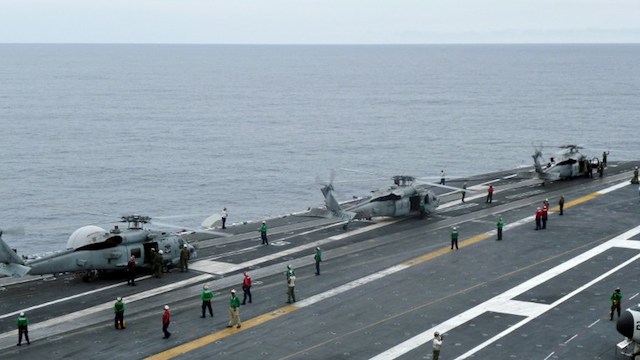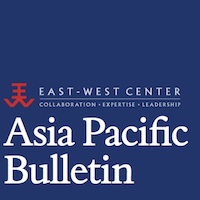SUMMARY
This is AI generated summarization, which may have errors. For context, always refer to the full article.

The foundation of US security strategy in Southeast Asia since the end of World War II has been a “hub and spoke” system of formal bilateral alliances with four countries in the region: Thailand, the Philippines, Australia and, for a period, New Zealand. During the Cold War these alliances became the primary vehicle for US and allied  governments to prosecute counterinsurgency campaigns against communist guerrilla forces. Both Manila and Bangkok allowed the Pentagon to establish major facilities that were critical to America’s largest counterinsurgency campaign in Indochina.
governments to prosecute counterinsurgency campaigns against communist guerrilla forces. Both Manila and Bangkok allowed the Pentagon to establish major facilities that were critical to America’s largest counterinsurgency campaign in Indochina.
The end of the Vietnam War in 1975 signaled a sharp diminution of the US military presence in Southeast Asia and the end of the Cold War in 1991 removed the overarching strategic threat. Not surprisingly, the value assigned to the alliances both in Washington and in the region declined – most tangibly expressed in Manila’s readiness to allow the US lease at Subic Bay to expire. Meanwhile, Thailand turned to China for support in dealing with its ongoing communist insurgency and the Vietnamese army’s occupation of neighboring Cambodia.
For Southeast Asia more generally, the 1990s were a heady time of rapid economic growth and societal modernization – powerfully reinforced by the dramatic growth in China’s economy. Post-Mao China emerged as an ideal neighbor committed to a “peaceful rise” and a growing economic partnership with its southern neighbors. Under these conditions it is remarkable that the entire US alliance system did not just dissolve. It continued due, in part, to simple inertia, the efforts of Singapore to provide facilities for Pacific Command (PACOM), shared concerns over terrorism after 9/11, and the unique value of PACOM’s capabilities in disaster mitigation demonstrated in response to the epic 2004 tsunami. Nevertheless, the Southeast Asia alliance system as a whole remained at a low ebb in terms of public visibility and strategic priority.
All this began to change three to four years ago – and has continued to do so at an accelerating pace. The driver of this change has been China – specifically the perception that Beijing’s investment in military capabilities, particularly maritime and air, is excessive and disquieting. Moreover, China’s overt moves to seize control over land features and maritime space in the South China Sea are alarming. As the only country with the military capability to potentially deter and frustrate China’s apparent territorial ambitions, the United States has found itself facing a profound strategic choice. Starkly put, should the United States signal that it will acquiesce to a de facto Chinese sphere of influence and security monopoly over the South China Sea and much of Southeast Asia or instead contest China’s geopolitical ambitions? During the George W. Bush administration’s preoccupation with the wars in Iraq and Afghanistan, strategic choices in East Asia were deferred.
President Barack Obama entered office determined to wind down these two military operations, making room for a refocus of US diplomatic, economic and military assets elsewhere, particularly in Southeast Asia. At a meeting of the ASEAN Regional Forum in July 2010, US Secretary of State Clinton effectively committed the United States to a policy of contesting China’s territorial ambitions in the South China Sea – and by implication, China’s broader hegemonic posture toward Southeast Asia. This strategy resonated with modern US history where US involvement in World War I and II, as well as the Cold War, had the fundamental strategic purpose of preventing Europe and Asia from coming under the domination of a rival and hostile hegemon. Specific US national interests in Southeast Asia (and East Asia more generally) include the preservation of major sea lanes of communication through the South China Sea as a global commons and the credibility of still binding US alliance commitments in the region.
If “containment” was the overarching descriptor of America’s Cold War strategy, “pivot” and “rebalance” serve that function for Southeast Asia today. No one close to this effort, in the White House, the Pentagon, or the State Department, has any illusions about the magnitude of the challenge. China is a multidimensional great power on a rapid ascent toward superpower capabilities. The nationalism fueling China’s regional ambitions runs very deep and the geographical distances involved in deploying US military power to the region are not insignificant. Moreover, China’s economic and demographic connections to Southeast are organic and profound.
That said; the “pivot” has several things going for it. First, fear and suspicion are natural attributes of small states dealing with a much larger, more powerful neighbor. Since the Peloponnesian Wars, states in such circumstances have looked to powerful friends from outside the immediate area for support. The United States seeks nothing more than a region that is stable, prosperous, autonomous, and accessible – objectives that coincide perfectly with the national interests of Southeast Asian states. China’s territorial and hegemonic ambitions, however, are profoundly antithetical to these interests. This is most obviously true of the South China Sea claimant states–Vietnam, the Philippines, Malaysia and Brunei – but distinct signs of unease with China’s assertiveness have been evident in such non-claimant capitals as Jakarta and Naypyidaw.
Second, the growing salience of multilateral arrangements centered on ASEAN has been a key feature of the region. ASEAN connectivity is valued as an engine of economic growth and a means of strengthening the region against external pressure and coercion. For the United States, multilateral security arrangements epitomized by the ASEAN Regional Forum (ARF) are a natural strategic supplement to the alliance system. China, however, has insisted that security issues, including maritime disputes, be handled bilaterally. From a Chinese strategist’s perspective, a binary face-off between China and the United States in the South China Sea is far more promising than one that also involves several other regional actors. The more numerous the players and the more complex and dense the interactions the less China will be able to control outcomes.
It is far too early to provide a scorecard on the pivot. President Obama and other senior officials have signaled ongoing US commitment through frequent travel to Southeast Asia. The first steps of a redeployment of the US military to the region has been implemented and a tailored military strategy – air-sea battle – is being actively developed. Other strategic partnerships with Southeast Asian counterparts are becoming more robust. Game theory predicts that in a competitive arena with multiple actors, coalitions will form. In Southeast Asia, we are seeing the emergence of an incipient coalition in support of US security strategy. The ultimate outcome of all of this is quite unclear. What is clear is that this will be the defining strategic contest of the first half of this century.
About the Authors
Dr. Marvin C. Ott is Senior Scholar at the Woodrow Wilson International Center for Scholars and Adjunct Professor at Johns Hopkins University/SAIS. Dr. Ott can be contacted at marvin.ott@wilsoncenter.org. Mr. Kenneth M. Ngo is Research Assistant at the Woodrow Wilson International Center for Scholars and can be contacted at Kenneth.Ngo@wilsoncenter.org. This piece was first published 11 February 2014.
The views expressed here are solely those of the author and not of any organization with which the author is affiliated.
The Asia Pacific Bulletin (APB) is produced by the East-West Center in Washington DC, designed to capture the essence of dialogue and debate on issues of concern in US-Asia relations. For comments/responses on APB issues or article submissions, please contact washington@eastwestcenter.org.
Add a comment
How does this make you feel?
There are no comments yet. Add your comment to start the conversation.